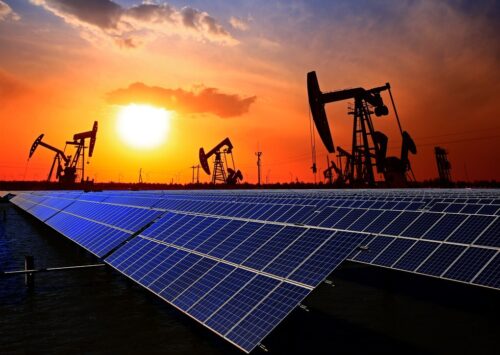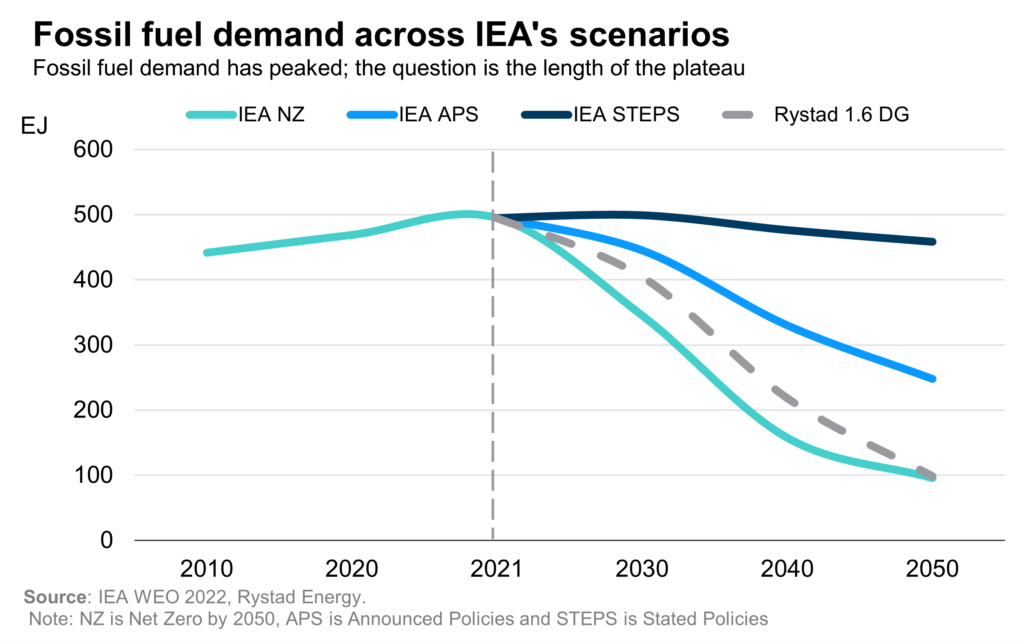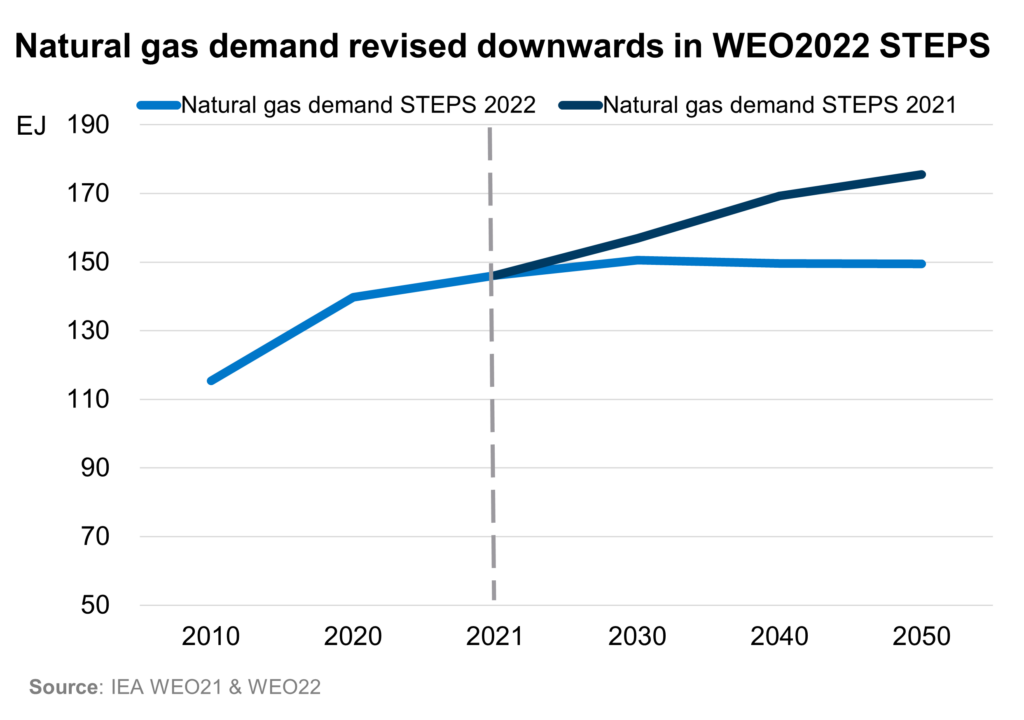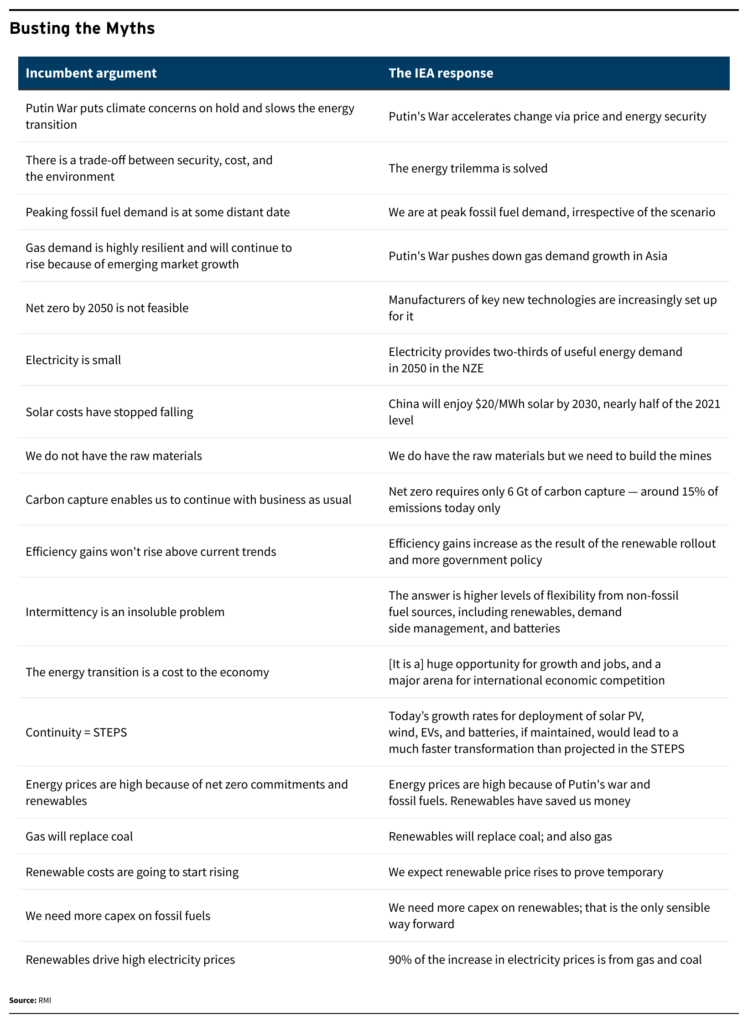Clean power energy concept,Oil pump with solar panels and the sunset

The IEA Confirms that Fossil Fuel Demand Is Peaking
The latest International Energy Agency outlook projects peak fossil fuel demand in every scenario and confirms a rapid clean energy transition is feasible.
The International Energy Agency (IEA) released its flagship annual World Energy Outlook (WEO) this morning. It is an important contribution to the global debate, debunking many of the classic incumbent myths, and providing detailed solutions to challenges we face. With the IEA’s contribution last year and this year, the analytical debate between legacy thinking and new energy thinking has shifted in favor of the new. The IEA has reaffirmed, with clarity and authority, the new consensus: a rapid clean energy transition is not only necessary and urgent, but feasible, just, and attractive. The famous energy trilemma of security, cost, and the environment, while once at odds, is now fully aligned. And from the fossil fuel crisis of today, the world will move faster and further away from the source of this crisis.
The IEA forecasts fossil fuel demand peaking in every area and every scenario. After 200 years of growth, we are at a historic turning point in the energy system, as fossil fuel demand is squeezed from both sides by rising renewables and increasing efficiency. RMI has long argued that demand for fossil fuels was peaking; the IEA now agrees. And from this starting point flows a key conclusion: it is time to reallocate capital and retool policy from fossils to renewables.
Part of the change relative to last year is driven by a new natural gas outlook. The golden age of gas is over, according to the IEA. High prices and supply uncertainty caused by Putin curtails the growth of gas demand in Asia; economic and security concerns move the sequencing of change from coal-to-gas to coal-to-renewables. In Asia this pushes down gas demand growth; in advanced economies it puts natural gas into prompt and sharp decline. If it was not already clear, 2022 and the IEA make it clearer: natural gas is a rickety pier into a fiery lake, not a bridge across it, to paraphrase Bill Mckibben.
The IEA goes on to remind us that it is this fiery and volatile fossil fuel system that is behind millions of people losing access to electricity and clean cooking and being driven into energy poverty; meanwhile the fossil industry takes home a $2 trillion windfall. The solution: accelerating energy efficiency and rolling out renewables.
The IEA has three scenarios: Stated Policies (STEPS or slow change), Announced Pledges (APS or fast change), and Net Zero by 2050 (NZE or faster change). For those familiar with the growth and cost trends of new energy technologies, their slow change scenario is unrealistic: it assumes that technology, policy, and renewable deployment suddenly stop evolving. An interesting modeling exercise, but not a scenario to anchor your expectations or strategy on. The only debate is between fast and faster change.
It is here the story gets more interesting: between their fast and faster change scenarios, reality is in many ways closest to faster change (NZE). For example, NZE projects 600 GW of solar deployed per year in 2030, which would mean in fact a slowdown from current growth rates (APS is much slower still). The NZE scenario also projects a reduction in the learning rates and cost declines of new energy technologies — a dynamic that lies at the heart of this story. We calculate the implied learning rates this decade in the WEO for solar as 18 percent, batteries as 10 percent, and wind as 8 percent. These are much lower than the past decade of 37, 19, and 36 percent for solar, batteries and wind respectively. Meanwhile the manufacturers of key new technologies such as solar and batteries are increasingly set up for the faster change scenario.
On electric vehicles (EVs), the outlook in the NZE that EVs will make up 60 percent of new sales by 2030 is not especially ambitious considering the rapid rise of EV sales up classic S-curves of growth. Four years ago, EVs were 2 percent of global sales, in August 2022 they were 18 percent, and in Norway they are already 90 percent of sales.
Getting off the fossil fuel demand plateau in the next five years, rather than ten, is difficult. We need proper plans to deploy grids and renewables at speed, to help those impacted by the transition, to increase investment in new energy technologies, to reduce the cost of capital for the Global South, to diversify renewable supply chains, to increase recycling of renewable technologies, and so on — the IEA details these issues well.
The IEA has given clear answers to solve the various low-quality debates of the past. Let us now get to work to bring forward this cleaner, securer, cheaper, and fairer energy future.



